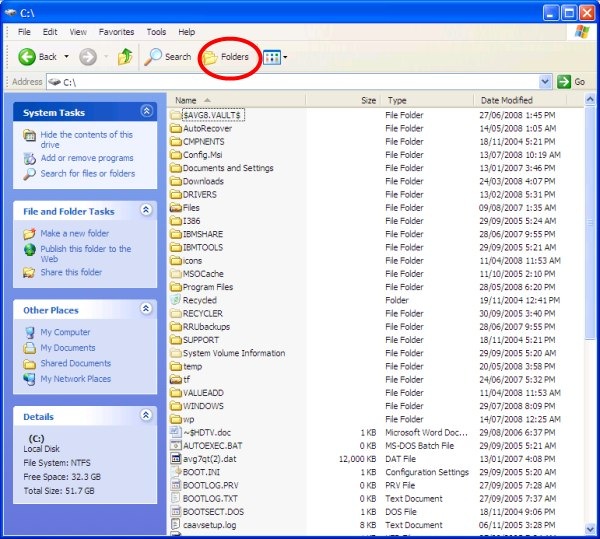Mastering Folder Views: A Comprehensive Guide to Customizing Folder Views in Windows XP

Introduction:
Customizing folder views in Windows XP allows users to tailor their file browsing experience according to their preferences and workflow requirements. Whether organizing files by type, size, or date modified, customizing folder views enhances efficiency and productivity by providing quick access to relevant information. In this extensive guide, we’ll delve deep into the intricacies of customizing folder views in Windows XP, equipping users with the knowledge and techniques to optimize their file management experience with precision and confidence.
Understanding Folder Views in Windows XP:
Before diving into customization methods, it’s essential to understand the concept of folder views in Windows XP. A folder view refers to the arrangement and display settings applied to a specific folder or directory in Windows Explorer. These settings dictate how files and folders are presented within the folder window, including the sorting order, icon size, and display layout. By customizing folder views, users can personalize their file browsing experience, making it easier to locate, organize, and manage files based on individual preferences.
Step-by-Step Guide to Customizing Folder Views:
Now, let’s embark on a systematic journey to customize folder views in Windows XP:
Step 1: Accessing Folder Options:
- Open Windows Explorer by clicking on the “Start” button and selecting “My Computer” or “Windows Explorer” from the menu.
- Navigate to the folder whose view settings you want to customize.
- Click on the “Tools” menu at the top of the window and select “Folder Options” from the dropdown menu.
Step 2: Customizing General Folder Settings:
- In the Folder Options dialog box, navigate to the “General” tab.
- Here, you can customize basic folder settings such as whether to open each folder in the same window or a new window, as well as whether to display full path in the title bar.
Step 3: Customizing View Settings:
- Switch to the “View” tab in the Folder Options dialog box.
- Here, you can customize various view settings, including:
- Icon Size: Adjust the size of icons displayed in the folder window.
- Arrange Icons By: Choose how files and folders are sorted within the folder window (e.g., by name, type, size, or date modified).
- Show in Groups: Group similar files and folders together based on specified criteria (e.g., by file type or date).
- Show Hidden Files and Folders: Toggle visibility of hidden files and folders within the folder window.
- Hide Extensions for Known File Types: Display or hide file extensions for known file types.
- Show Control Panel in My Computer: Display or hide the Control Panel icon in the My Computer window.
Step 4: Applying Folder Customizations:
- Once you’ve customized the folder view settings to your liking, click on the “Apply to All Folders” button to apply the settings globally to all folders on your system.
- Click on the “Apply” button to apply the settings to the current folder only, or click on the “OK” button to apply the settings and close the Folder Options dialog box.
Step 5: Viewing Customizations in Action:
- Navigate to other folders on your system to see the applied customizations in action.
- Experiment with different view settings and arrangements to find the configuration that best suits your preferences and workflow.
Advanced Techniques and Tips:
For advanced users or those seeking additional customization options, consider the following techniques and tips:
- Customizing Folder Types: In the Folder Options dialog box, navigate to the “File Types” tab to customize specific folder types (e.g., music folders, picture folders) with unique view settings.
- Editing Folder Templates: Use the Customize tab in the Folder Options dialog box to create or modify folder templates with predefined view settings for specific folder types.
- Creating Shortcut to Customize Views: To quickly access folder customization options, create a shortcut to the Folder Options dialog box on your desktop or taskbar for easy access.
Conclusion:
In conclusion, customizing folder views in Windows XP is a powerful tool for enhancing productivity and organization in file management tasks. By following the step-by-step guide outlined in this article and considering advanced techniques and tips, users can personalize their file browsing experience with precision and confidence, making it easier to locate, organize, and manage files according to individual preferences and workflow requirements. Whether adjusting icon size, sorting order, or display layout, mastering the art of customizing folder views empowers users to optimize their file management experience and maximize productivity on their Windows XP systems. So dive into folder customization today, tailor your file browsing experience to perfection, and unlock a world of possibilities for efficient file management on your Windows XP system with ease and efficiency.




